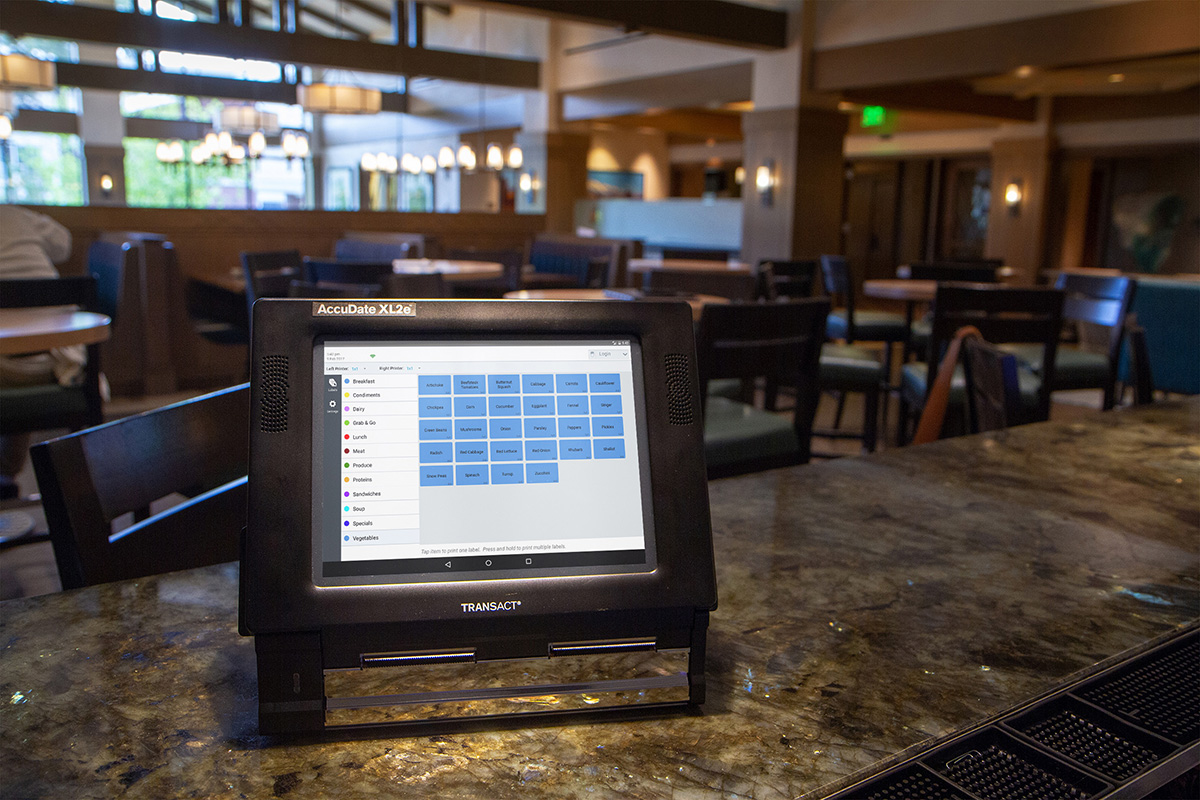Sponsored by TransAct Technologies.
In the quick-service market today, with all of the moving parts in multiple restaurants, it can be nearly impossible to keep up. In addition to training and onboarding staff, keeping track of the longevity of ingredients’ shelf lives can be cumbersome. Dry goods like a bag of rice can be good for 200 days, whereas a chicken salad made in-house can last only a day or two. Juggling the range of products coming in and out of the restaurant at all different times and shelf lives can be an all-consuming job for managers. Plus, not keeping good track of ingredients or pre-made food, or having an error in food expiry dates can lead to food safety scares that can be detrimental to customers and the brand’s reputation.
Relying on employees to handwrite labels on these products involves training that can be time-consuming, costly, and risky. Handwritten labels can be difficult to read, involve unreliable arithmetic, and require more follow up from managers. Estimating how many labels one will need for a certain product on a certain day could lead to wasted resources, which eats into costs.
With growing labor costs, this is inefficiency no growing brand can afford. That’s why some restaurants are turning to, a cloud-based, easy-to-use system that simplifies labeling and other back-of-house operations.
TransAct’s AccuDate XL2e is a multi-purpose system that allows restaurants to centrally manage back-of-house operations and automate food labeling. Employees need only press a button for a dish being prepared, and the system prints a label that contains all the accurate ingredient and date information, eliminating the need to rely on quick calculations from memory or date charts. And, as it is all hosted on the cloud, managers can easily keep track of any changes to products in any one of their restaurants from anywhere.

Plus, the system allows restaurants to digitize recipe cards and enhance employee training by taking away the need for large binders with expensive-to-print materials that can quickly become out of date. This means that brands can be sure that their teams are using the most up-to-date information in order to protect the brand and to reduce the time it takes managers to retrain employees on recipes and labeling.
Though many restaurants have training materials located in a back office or accessed through a manager’s computer, the AccuDate XL2e improves the efficiency of the training process by moving it right into the workspace. The system is located in the kitchen, meaning that employees actually train on the job. “When training relies on the manager’s computer, only one person can do it at a time in a restricted area,” says says Miguel Oritz, Transact Tech’s director of marketing. “By moving training into the workspace, you can display the materials to multiple employees, and by doing so where they work, their employees are ready to work more quickly.”
Another big benefit is that if employees forget a recipe, they can easily access that information without needing to leave the workspace or flip through a binder. And because the system is cloud-based, a restaurant leader can send updated information out to all the locations at once. For example, Oritz says if a restaurant needs to change an ingredient for a recipe, all a restaurant would have to do is go into the system and change that one item. With this one small change, not only is the recipe updated, but all future labels at all locations will also display the new ingredient list without requiring brands to reorder preprinted labels and throw away the old ones.
Tony Saady, owner at Azar’s Mediterranean Grill with two locations in Virginia Beach, Virginia, has been using the TransAct system for almost two years. “What I really like about it,” he says, “is that you can put a production time date and the person who printed it on each label, so I don’t have to worry about employees remembering codes and shelf life.” When errors are found, the employee information on the labels ensure training issues can be addressed quickly.
The labels are available in a variety of sizes and can be printed with with the date and time food was made, date and time it expires, and a barcode for prepackaged foods, assisting with his inventory control efforts.
Saady, who previously ordered pre-printed labels that weren’t always used, says the amount of product he saves from collecting dust on the shelf is worth the expense of the TransAct system. He also notes that the interface is easy for his employees to master, so they can focus on the tasks at hand—preparing food and serving customers.
“A lot of our customers save two to three hours a week with our device,” Oritz says. That’s a substantial amount of time and money considering most foodservice employees are paid hourly, as well as the additional savings from the elimination of errors involved in the handwritten and pre-printed systems.
And for restaurant owners and managers, whose time is valuable, the benefit is enormous. Not only do they have peace of mind that products have been labeled correctly and have the right expiration dates, but they are also relieved of the monotony of having to spend time in the kitchen following up on labeling and training issues. Instead, they can spend time with their team members and guests and ensure food quality and service—two things that make or break a restaurant in the age of online reviews–are consistent.
Saady says the time he’s saved alone from accessing the system in the kitchen instead of going to the office to manually tackle the task cannot be quantified. “It’s hours,” he says. And the ability to program labels remotely whenever necessary has made his job that much easier.
“Some of our customers have seen up to a quick two to three times return on investment at a year mark,” Ortiz says. “It pays for itself.”













